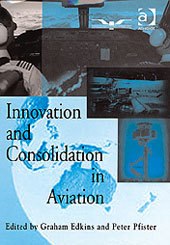Contents: Foreword, Robert Lee. Part I: System Safety and Accident Prevention: Heroic compensations: the benign face of the human factor, James Reason; Aviation safety and human factors: the years to come, Daniel E. Maurino; Managing threat and error: data from line operations, Robert L. Helmreich, James R. Klinect and John A. Wilhelm; Management influence on safety climate, Rhona Flin; Models of bureaucratic failure, Ron Westrum; Culture, systems and change in aircraft maintenance organization, Nick McDonald; Barrier analysis and accident prevention, Erik Hollnagel; Cognitive work analysis across the system life-cycle: achievements, challenges and prospects in aviation, Penelope M. Sanderson; Human factors reporting and situation awareness, Mike O'Leary. Part II: Contrasting Human Factors Applications in Aviation, Healthcare and Nuclear Power: Threat and error in aviation and medicine: similar and different, Robert L. Helmreich; Managing human factors at Qantas: an investment in the future, Ian Lucas and Graham Edkins; CRM behaviour and team performance under high workload: outline and implications of a simulator study, Barbara Klampfer, Ruth Haeusler and Werner Naef; Stretching the search for the 'Why' of error: the system approach, Marilyn Sue Bogner; Betty and the general, Jan M. Davies; Managing human performance in the modern world: developments in the US nuclear industry, John Wreathall and Ashleigh Merritt. Part III: Training, Licensing and Regulations: Artificial seasoning: enhancing experience-based training for aviation, David O'Hare; Decision skills training for the aviation community, Gary Klein; Ab-initio flight training and airline pilot performance: differences in job requirements, Peter Maschke and Klaus-Martin Goeters; Validating a computer-based training tool for in-flight weather-related decision-making, Mark Wiggins, David O'Hare and Oliver Lods; Learning to land: the role of perceptual feedback and individual differences, Susannah J. Tiller, Peter Pfister, Allen T. G. Lansdowne, Stephen C. Provost and David J. Allerton; A cognitive approach to the development of prescriptions for a new flight crew licence: psychological perspective from a regulator and curriculum designer, Graham J. F. Hunt and Richard Macfarlane; Legislating behaviour: the regulator's dilemma, Mick Toller. Part IV: Automation and Human Computer Interaction: Auditory warnings in the cockpit: an evaluation of potential sound types, Karen L. Stephan, Sean E. Smith, Simon P. A. Parker, Russell L. Martin and Ken I. McAnally; Dealing with conflicting information: will crews rely on automation?, Kathleen L. Mosier, Jeffrey Keys and Robert Bernhard; Development of hazard analysis techniques for human-computer systems, Andrew Neal, Michael Humphreys, David Leadbetter and Peter Lindsay; General aviation pilot attitudes towards GPS use: operational implications, Michael D. Nendick, Ross St. George, Kurt M. Joseph and Kevin Williams. Part V: Human Factors Applications within the ATS Environment: Protecting the ATM system from human error: the JANUS approach, Anne R. Isaac; Prospective memory in air traffic control, Shayne Loft, Michael Humphreys and Andrew Neal; Human factors issues in CPDLC, John Allin Brown. Part VI: Other Human Factors Issues: Alertness and awareness of long haul aircrews: the contribution of a new interface concept as an effective fatigue countermeasure, Jean-Jacques Speyer, Adrian Elsey, Philippe Cabon, Regis Mollard, Samira Bougeois-Bougrinne, Nicolas Parriaux and Marc Perrinet; Inadvertent slide activation, Dieter Reisinger.




